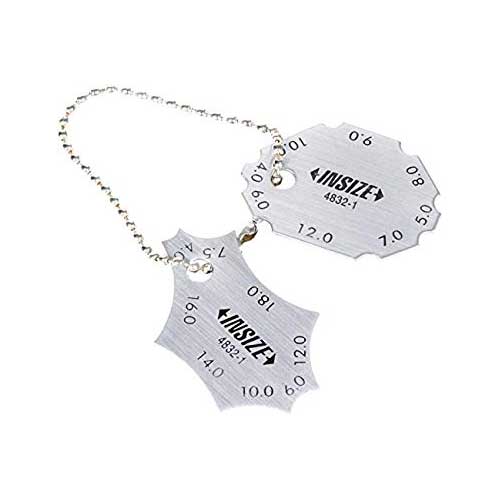Grasping Gauge Fillet Welds: Tips for Perfect Measurements and Implementation
Grasping Gauge Fillet Welds: Tips for Perfect Measurements and Implementation
Blog Article
Fillet Weld Design Techniques: Enhancing Joint Performance and Aesthetics for Structural Honesty
In the realm of architectural design and fabrication, the value of fillet weld design techniques can not be overstated. By meticulously taking into consideration variables such as weld account optimization, product choice, joint prep work strategies, welding process efficiency, and visual improvement methods, producers and engineers can achieve an unified equilibrium in between performance and appearance in their welded frameworks.
Weld Account Optimization


Attaining an ideal weld profile entails a careful factor to consider of aspects such as product thickness, joint setup, welding position, and preferred welding speed. Additionally, the choice of proper welding specifications, such as voltage, current, and take a trip speed, is basic in controlling the form and measurements of the fillet weld. Making use of sophisticated welding strategies, such as pulse welding or robotic welding, can further refine the weld profile to satisfy particular style requirements and top quality standards.
Basically, weld account optimization is a basic facet of fillet weld style that straight influences the overall performance and integrity of bonded joints in structural applications.
Product Option Considerations
When taking into consideration material choice for fillet weld design, the compatibility of the base steels is a vital element affecting the architectural integrity of the joint. It is vital to choose products that not only weld with each other efficiently but likewise possess comparable mechanical homes to make sure the load is evenly distributed in between the weld and the base metals. Welding materials with greatly different buildings can result in problems such as stress and anxiety focus, early joint failure, or cracking.
Furthermore, the environment in which the bonded structure will operate should be taken into account when selecting products. Factors like rust resistance, temperature level changes, and exposure to chemicals can all affect the long life and performance of the weld joint. By picking materials that appropriate for the desired application useful source and environment, the overall sturdiness and dependability of the welded joint can be significantly enhanced.
For that reason, complete factor to consider of product compatibility and ecological variables is critical in ensuring the weld joint's strength, longevity, and total architectural honesty.

Joint Preparation Methods
Thinking about the important role product selection plays in making certain the architectural honesty of fillet weld joints, it is important to execute exact joint preparation strategies that enhance the link in between the base metals. Joint preparation is a crucial step that directly affects the quality and strength of the weld.
Additionally, tack welding the elements in location prior to the last weld aids maintain positioning and reduces distortion during the welding process. By meticulously following these joint preparation strategies, welders can boost the total performance and aesthetics of fillet weld joints while ensuring architectural stability.
Welding Refine Effectiveness
Efficient welding procedures are crucial for achieving optimal performance and quality in fillet weld fabrication. One crucial facet of boosting welding procedure efficiency is choosing the suitable welding technique. Factors such as material kind, joint design, and welding position need to be very carefully taken into consideration to determine one of the most suitable approach. For circumstances, procedures like gas metal arc welding (GMAW) and flux-cored arc welding (FCAW) check that are frequently utilized for fillet welds due to their flexibility and rate (Gauge Fillet Weld).
Normal calibration of welding devices, assessment of consumables, and maintenance of welding torches can stop downtime and revamp, ultimately saving time and sources. Trained welders are more experienced at readjusting parameters, troubleshooting concerns, and keeping constant weld high quality.
Aesthetic Enhancement Techniques
To optimize the top quality of fillet weld fabrication, executing aesthetic enhancement techniques can play a crucial role in guaranteeing precision and precision throughout the welding process. Visual aids such as weld size evaluates and magnifying lenses can help in examining weld accounts and dimensions precisely. By integrating these aesthetic enhancement techniques into the welding procedure, welders can attain not just structurally sound fillet welds yet also visually enticing results view that meet sector requirements.

Conclusion
Finally, optimizing fillet weld style includes mindful consideration of weld account, material selection, joint preparation, welding process efficiency, and visual enhancement techniques. By carrying out these techniques, structural honesty can be improved while additionally achieving aesthetic charm. It is important to prioritize both performance and appearances in fillet weld style to make sure the total high quality and sturdiness of the joint.
By meticulously considering variables such as weld profile optimization, material selection, joint preparation techniques, welding procedure performance, and aesthetic enhancement makers, approaches and engineers can achieve an unified equilibrium between capability and appearance in their bonded structures.In the realm of fillet weld layout, enhancing the weld account plays an important function in making sure architectural integrity and performance. The weld account, which consists of the dimension and shape of the weld cross-section, directly influences the distribution of stress and load-bearing ability within the joint. It is crucial to choose products that not only bonded with each other successfully however likewise possess similar mechanical buildings to ensure the tons is uniformly distributed in between the base and the weld metals - Gauge Fillet Weld.In final thought, maximizing fillet weld design entails careful factor to consider of weld profile, product selection, joint prep work, welding procedure performance, and visual improvement methods
Report this page